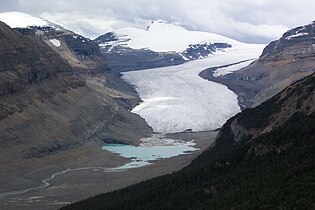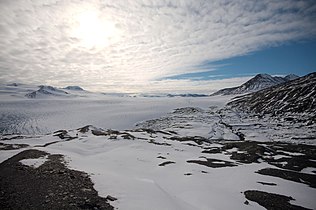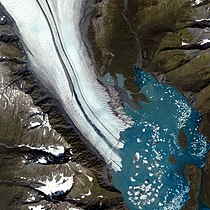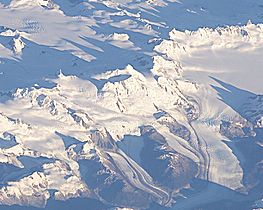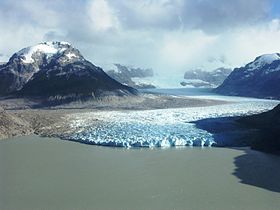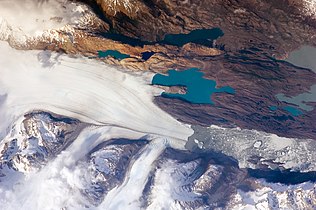Ice fields
Jump to navigation
Jump to search
Deutsch: Inlandeis, Eisfelder, Eisschild
English: An Ice field(also spelled icefield) is an area of less than 50,000 km² (19,305 mile²)[citation needed] of ice often found in the colder climates and higher altitudes of the world where there is sufficient precipitation. It is an extensive area of interconnected valley glaciers from which the higher peaks rise as nunataks. Ice fields are larger than alpine glaciers, smaller than ice sheets and similar in area to ice caps. The topography of ice fields is determined by the shape of the surrounding landforms, while ice caps have their own forms overriding underlying shapes.
Español: Campos de hielo
Français : Un Inlandsis ou champ de glace est une zone de moins de 50 000 km2 de glace qui se retrouve souvent dans les climats plus froids et à des altitudes élevées où les précipitations sont suffisantes. Il s'agit d'une vaste zone de glaciers de vallée interconnectés dont les plus hauts sommets s'élèvent comme nunataks. Les champs de glace sont plus grands que les glaciers alpins, plus petits que les inlandsis et proches des calottes glaciaires. La topographie des champs de glace est déterminée par la forme des reliefs qu'ils recouvrent.
Ice fields in Canada
[edit]-
Kluane Icefield
-
Outlet glacier of Columbia Icefield: Saskatchewan Glacier
Ice fields in Alaska
[edit]-
Bear Glacier, an outlet glacier of the Harding Icefield
Ice fields of Chile
[edit]Northern Patagonian Icefield
[edit]-
Cerro Arenales
-
An outlet glacier
-
Development of some outlet glaciers: Retreat (animation)




